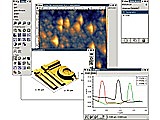 Gwyddion is a modular SPM (Scanning Probe Microsope) data visualization and analysis tool. It can be used for all most frequently used data processing operations including: leveling, false color plotting, shading, filtering, denoising, data editing, integral transforms, grain analysis, profile extraction, fractal analysis, and many more. The program is primarily focused on SPM data analysis (e.g. data obtained from AFM, STM, NSOM, and similar microscopes). However, it can also be used for analyz
Gwyddion is a modular SPM (Scanning Probe Microsope) data visualization and analysis tool. It can be used for all most frequently used data processing operations including: leveling, false color plotting, shading, filtering, denoising, data editing, integral transforms, grain analysis, profile extraction, fractal analysis, and many more. The program is primarily focused on SPM data analysis (e.g. data obtained from AFM, STM, NSOM, and similar microscopes). However, it can also be used for analyz
 Orekit aims at providing accurate and efficient low level components for the development of flight dynamics applications. It is designed to be easily used in very different contexts, from quick studies up to critical operations. As a library, Orekit provides basic elements (orbits, dates, attitude, frames, ...) and various algorithms to handle them (conversions, propagations, pointing, ...).
Orekit aims at providing accurate and efficient low level components for the development of flight dynamics applications. It is designed to be easily used in very different contexts, from quick studies up to critical operations. As a library, Orekit provides basic elements (orbits, dates, attitude, frames, ...) and various algorithms to handle them (conversions, propagations, pointing, ...).
 GPlates is a plate tectonics program. Manipulate reconstructions of geological and paleogeographic features through geological time. Interactively visualize vector, raster and volume data. PyGPlates is the GPlates Python library. Get fine-grained access to GPlates functionality in your Python scripts.
GPlates is a plate tectonics program. Manipulate reconstructions of geological and paleogeographic features through geological time. Interactively visualize vector, raster and volume data. PyGPlates is the GPlates Python library. Get fine-grained access to GPlates functionality in your Python scripts.
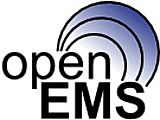 openEMS is a free and open electromagnetic field solver using the FDTD method. Matlab or Octave are used as an easy and flexible scripting interface.
openEMS is a free and open electromagnetic field solver using the FDTD method. Matlab or Octave are used as an easy and flexible scripting interface.
 Everything you need to design, simulate and fly better rockets OpenRocket is a free, fully featured model rocket simulator that allows you to design and simulate your rockets before you build and flying them.
Everything you need to design, simulate and fly better rockets OpenRocket is a free, fully featured model rocket simulator that allows you to design and simulate your rockets before you build and flying them.
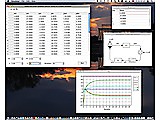 The Bricks collection is a set of Pascal units that provides a class library for rapid programming of high-performance computer simulations in life sciences. It also delivers functionality that facilitates the generation of block diagrams in software. CyberUnits is a reusable cross-platform class library for rapid programming of high-performance computer simulations in life sciences. It supports modelling for biomedical cybernetics and systems biology with Object Pascal.
The Bricks collection is a set of Pascal units that provides a class library for rapid programming of high-performance computer simulations in life sciences. It also delivers functionality that facilitates the generation of block diagrams in software. CyberUnits is a reusable cross-platform class library for rapid programming of high-performance computer simulations in life sciences. It supports modelling for biomedical cybernetics and systems biology with Object Pascal.
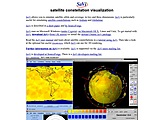 SaVi is software for simulation and visualization of satellite orbits, especially satellite constellations such as O3b, Starlink and Project Kuiper. It shows and animates movement and coverage over the Earth in two and three dimensions. SaVi can optionally use Geomview for 3D rendering.
SaVi is software for simulation and visualization of satellite orbits, especially satellite constellations such as O3b, Starlink and Project Kuiper. It shows and animates movement and coverage over the Earth in two and three dimensions. SaVi can optionally use Geomview for 3D rendering.
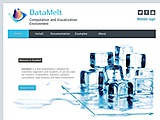 DataMelt is a program for numeric computation, mathematics, statistics, symbolic calculations, data analysis and data visualization. It supports several scripting languages, such as Python, Ruby, Groovy (and others), with the power of hundreds of Java packages. Available for Windows, Linux and Mac OS.
DataMelt is a program for numeric computation, mathematics, statistics, symbolic calculations, data analysis and data visualization. It supports several scripting languages, such as Python, Ruby, Groovy (and others), with the power of hundreds of Java packages. Available for Windows, Linux and Mac OS.
 FlightGear is an open-source flight simulator. It supports a variety of popular platforms (Windows, Mac, Linux, etc.) and is developed by skilled volunteers from around the world. Source code for the entire project is available and licensed under the GNU General Public License. The goal of the FlightGear project is to create a sophisticated and open flight simulator framework for use in research or academic environments, pilot training, as an industry engineering tool, for DIY-ers to pursue t
FlightGear is an open-source flight simulator. It supports a variety of popular platforms (Windows, Mac, Linux, etc.) and is developed by skilled volunteers from around the world. Source code for the entire project is available and licensed under the GNU General Public License. The goal of the FlightGear project is to create a sophisticated and open flight simulator framework for use in research or academic environments, pilot training, as an industry engineering tool, for DIY-ers to pursue t
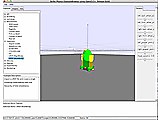 Bullet is a 3D game multiphysics library that provides state of the art collision detection and soft body and rigid body dynamics. Bullet is integrated into Cinema 4D, Lightwave, and Blender. A Houdini and Maya Plugin is available. It has a modular extendible C++ design with hot-swap of most components. The back-ends were optimized for pthreads/Win32 Threads multi-threading and PS3 Cell SPU. Other features include discrete and continuous collision detection (CCD), swept collision queries, ray ca
Bullet is a 3D game multiphysics library that provides state of the art collision detection and soft body and rigid body dynamics. Bullet is integrated into Cinema 4D, Lightwave, and Blender. A Houdini and Maya Plugin is available. It has a modular extendible C++ design with hot-swap of most components. The back-ends were optimized for pthreads/Win32 Threads multi-threading and PS3 Cell SPU. Other features include discrete and continuous collision detection (CCD), swept collision queries, ray ca
 Nelson is an array programming language providing a powerful open computing environment for engineering and scientific applications using modern C/C++ libraries (Boost, Eigen, …) and others state of art numerical libraries. It has sophisticated data structures (including cell, struct, linear systems, …), an interpreter and a high level programming language. Nelson has been developped to be an open/modular system where an user can define these own data types and operations on these data types b
Nelson is an array programming language providing a powerful open computing environment for engineering and scientific applications using modern C/C++ libraries (Boost, Eigen, …) and others state of art numerical libraries. It has sophisticated data structures (including cell, struct, linear systems, …), an interpreter and a high level programming language. Nelson has been developped to be an open/modular system where an user can define these own data types and operations on these data types b
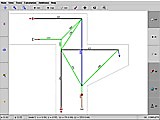 Fachwerk calculates strut-and-tie models used by structural engineers for analysing and designing reinforced concrete structures. The program only uses the equilibrium conditions, thus it is not assuming elastic behaviour.
Fachwerk calculates strut-and-tie models used by structural engineers for analysing and designing reinforced concrete structures. The program only uses the equilibrium conditions, thus it is not assuming elastic behaviour.
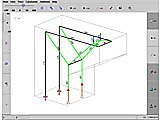 Fachwerk3D calculates three-dimensional strut-and-tie models used by structural engineers for analysing and designing reinforced concrete structures. The program only uses the equilibrium conditions, thus it is not assuming elastic behaviour.
Fachwerk3D calculates three-dimensional strut-and-tie models used by structural engineers for analysing and designing reinforced concrete structures. The program only uses the equilibrium conditions, thus it is not assuming elastic behaviour.
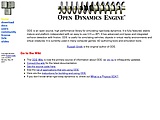 ODE is a high performance library for simulating rigid body dynamics. It is fully featured, stable, mature, and platform independent with an easy-to-use C/C++ API. It has advanced joint types and integrated collision detection with friction. ODE is useful for simulating vehicles, objects in virtual reality environments, and virtual creatures. It is currently used in many computer games, 3D authoring tools, and simulation tools.
ODE is a high performance library for simulating rigid body dynamics. It is fully featured, stable, mature, and platform independent with an easy-to-use C/C++ API. It has advanced joint types and integrated collision detection with friction. ODE is useful for simulating vehicles, objects in virtual reality environments, and virtual creatures. It is currently used in many computer games, 3D authoring tools, and simulation tools.
 ODE is a high performance library for simulating rigid body dynamics. It is fully featured, stable, mature, and platform independent with an easy-to-use C/C++ API. It has advanced joint types and integrated collision detection with friction. ODE is useful for simulating vehicles, objects in virtual reality environments, and virtual creatures. It is currently used in many computer games, 3D authoring tools, and simulation tools.
ODE is a high performance library for simulating rigid body dynamics. It is fully featured, stable, mature, and platform independent with an easy-to-use C/C++ API. It has advanced joint types and integrated collision detection with friction. ODE is useful for simulating vehicles, objects in virtual reality environments, and virtual creatures. It is currently used in many computer games, 3D authoring tools, and simulation tools.
 SOLID (Software Library for Interference Detection) is a library for collision detection of three-dimensional objects undergoing rigid motion and deformation. SOLID is designed to be used in interactive 3D graphics applications, and is especially suited for collision detection of objects and worlds described in VRML. Object shapes are represented by primitive shapes (box, cone, cylinder, sphere), and complexes of polytopes (line segments, convex polygons, convex polyhedra). Motion is specified b
SOLID (Software Library for Interference Detection) is a library for collision detection of three-dimensional objects undergoing rigid motion and deformation. SOLID is designed to be used in interactive 3D graphics applications, and is especially suited for collision detection of objects and worlds described in VRML. Object shapes are represented by primitive shapes (box, cone, cylinder, sphere), and complexes of polytopes (line segments, convex polygons, convex polyhedra). Motion is specified b
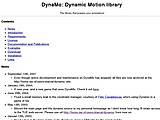 DynaMo is a software library providing classes that take care of the calculation of the motions of objects under the influence of force, torque, and impulse. It can also compute forces for you through the mechanism of constraints. These allow you to easily connect geometries to each other in various ways. A constraint only has to be specified once, and the library will continually enforce it from that moment on by applying the required reaction forces. Over a dozen constraints available, includi
DynaMo is a software library providing classes that take care of the calculation of the motions of objects under the influence of force, torque, and impulse. It can also compute forces for you through the mechanism of constraints. These allow you to easily connect geometries to each other in various ways. A constraint only has to be specified once, and the library will continually enforce it from that moment on by applying the required reaction forces. Over a dozen constraints available, includi
|